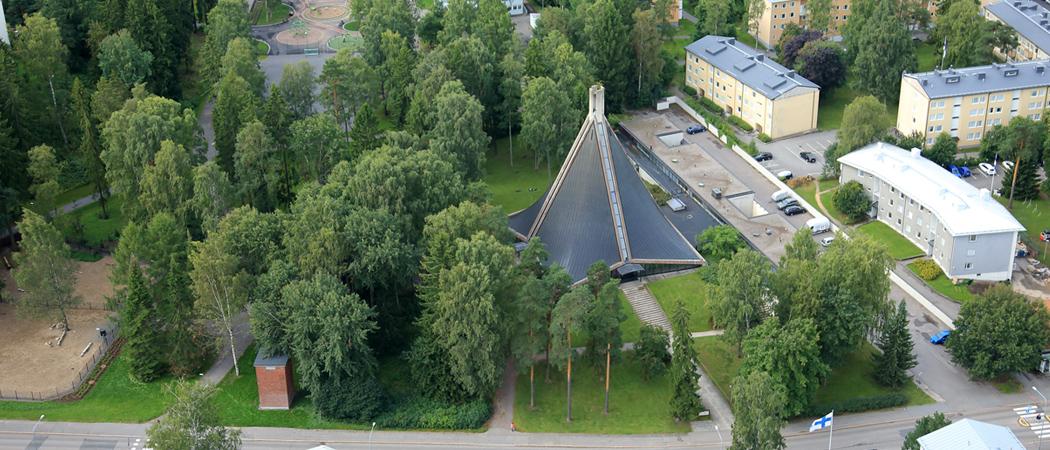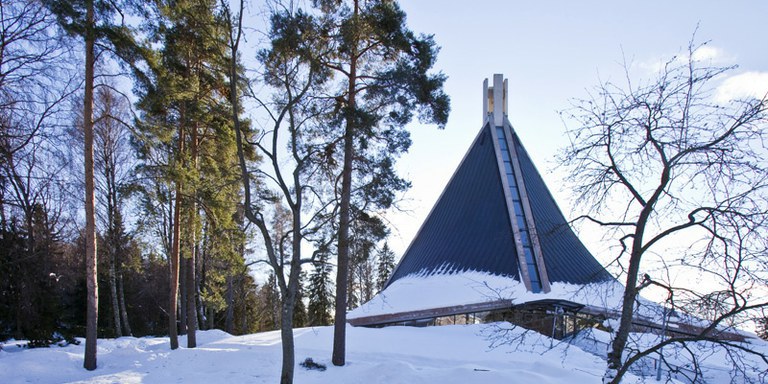Kannelmäki Church
Kannelmäki parish

The tent-like church, which was designed by architects Marjatta and Martti Jaatinen, was completed in 1968. It was later expanded in 1992 and renovated in 1997.
The altar window is covered by painter Hilkka Toivola's 31-meter-wide stained glass, symbolizing the painting Tree of Life dating back to 1972. This work of art at most reaches a height of about three meters and consists of 111 panes. The stained glass looks its best when the sun or spotlights installed around the church make it glow in all its colors.
A large wooden cross designed by interior designer Kari Asikainen has been erected on the church's apsis. At its center is a gilded silver plate designed by silversmith Börje Rajalin, with five red stones in the cross-shaped opening as a sign of the wounds of Christ. The cross follows the shape of the floor plan of the church. In addition, the four narrow skylights of the square-shaped church form a cross, as do the four concrete pillars with their cross-pillars rising from the top of the building when viewed from different perspectives. The T-cross was designed by Börje Rajalin for the bronze crucifix of the altar table.
The roof of the church consists of four hyperbolic paraboloid surfaces, made of seven-centimeter-thick reinforced concrete. The trace of the concrete boarding of the ceiling suggests the architect's original plan to build the roof of church by hanging a lightweight wooden roof on steel cables. However, this plan had to be abandoned. Four corner pillars support the weight of the roof of the church, weighing 580 tons.
The internal height of the church hall is 24 meters. The external height up to the top of the cross made of concrete is 30 meters.
In the altar, there is lightweight furniture, made of ash tree wood. The shape of the altar illustrates its purpose as a communion table. As the first job in his furniture design career, Kari Asikainen designed the benches of Kannelmäki Church. Church textiles were designed by textile artist Vuokko Nurmesniemi and church silver by Börje Rajalin.
The organ which was designed by cantor Asko Rautioaho and manufactured by the Kangasala organ factory, produces 29 tones and was first put to use in 1970. The low clock stand designed by the architects was not implemented. The bell melodies composed by Professor Taneli Kuusisto were recorded with the bell ringing of Myllypuro Church. They are heard from speakers placed on top of the church.







